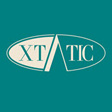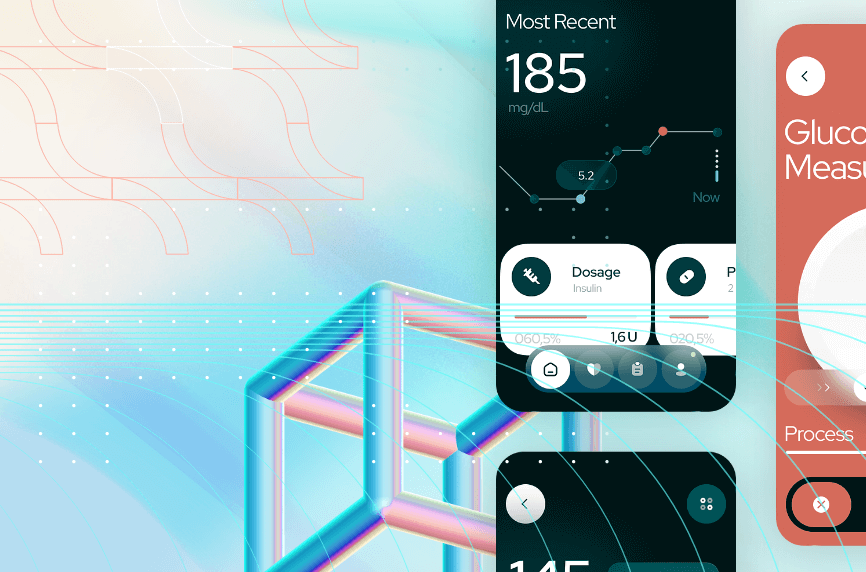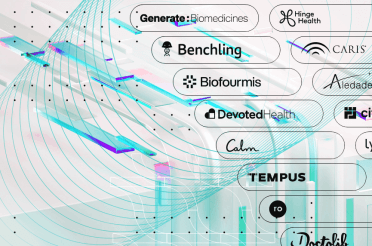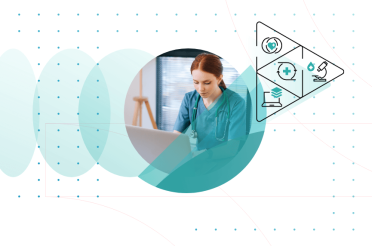The integration of Digital Health Applications (DiGAs) emerges as a pivotal conduit, reshaping how healthcare in Germany is accessed, managed, and delivered. DiGAs hold the promise of fostering enhanced access to medical activities, providing patients with permanent access to their health data, and revolutionizing the way healthcare providers collaborate in complex medical cases.
The power of digitalization extends to encompass digital receipts, granting patients unprecedented control over their prescribed medical products. Without such control, many people would not put their trust in the public healthcare system in Germany, the private regulators, and the applications themselves.
Additionally, the digital revolution brings forth the opportunity to construct comprehensive digital portfolios, aggregating research, and consultations for the utmost benefit of patients. However, this transformation is not without challenges, as the paramount concern of data security looms large, posing the question of how to establish trust and safeguard patient information.
DiGA impact and history in Germany
In the dynamic landscape of healthcare transformation, Digital Health Applications (DiGAs) have emerged as a resounding success story within Germany’s healthcare framework. With around 33 DiGA applications catering to patients who might have otherwise been unable to access these benefits, the impact has been substantial.
The central purpose of the DiGAV (Digital Health Applications Regulation) framework is to establish a standardized and regulated avenue for these applications, enabling their full potential to be harnessed for the greatest impact on patients and startups alike.
Over its nearly three-year presence, the DiGAV initiative has contributed to a notable positive shift within Germany’s healthcare practices, a shift that other countries, like France, aspire to implement but have yet to fully execute.
Despite its achievements, challenges persist in the integration of digital healthcare solutions into Germany’s healthcare system. One notable obstacle is the absence of a seamless digital prescription mechanism, leading to multiple points of conversion and complex processes. Nevertheless, manufacturers that have embraced the DiGA framework are experiencing tangible benefits and are now appreciating their choice to engage with it.
Regulation emerges as a key driver in the realm of digital healthcare, as it offers patients the ability to access crucial information through digital apps and products, rather than solely relying on online search engines.
The inception of DiGAs as part of Germany’s accelerated digitalization of its healthcare system has not only sparked positive change but has also illuminated the importance of regulation and integration.
DiGA’s importance for Germany’s healthcare industry
For each person to use a certain app, they need to be able to trust it with their information. For a long time apps and medical data have been leaked for the extortion and manipulation of customers by third parties.
A fundamental requirement is the demonstration of tangible benefits, substantiated by clinical studies, with a preference for randomized controlled trials (RCTs) offering robust evidence. Beyond these technical aspects, DiGAs’ integration into the healthcare framework is achieved through the fulfillment of specific conditions governing prescription and billing.

Ensure your DIGAs integration is beneficial for both patients and users.
Bring your DIGA idea to life by legeraving the expert knowledge of BGO Software’s experts.

Central to this integration is a concentrated focus on the medical purpose of the application and the engagement of the active user. The variety of steps taken before the release of the approval of a given app shows the pivotal role that DiGAs are poised to play in shaping the dynamic landscape of digital health.
Overview of the DIGA application process
Launching a DiGA application that is safe to use and beneficial to users and adheres to all standards set by the German government can be quite difficult. Especially if similar apps have been implemented by other European countries and are already helping people.
Navigating the DiGA application process entails a comprehensive journey, marked by a detailed form featuring no less than 175 intricate questions. This meticulous assessment serves as the foundation for evaluating the worthiness of a DiGA’s inclusion and the impact it will have on the people and hospitals using it.
It’s not unheard of for external experts to be used to furnish the application with a solid bedrock of compelling evidence of its positive impact. Experts in clinical research and statistical analysis can design studies, implement methodologies, and analyze data in ways that ensure the validity and reliability of the evidence generated.
The knowledge that they provide and collect reduces the risk of a DiGA application being rejected because of insufficient evidence.
In those cases where the initial evidence appears inconclusive, there is a finite window given to providers to address any shortcomings before attaining full listing. This iterative approach not only ensures the integrity of the evaluation process but also demonstrates the willingness to foster improvement.
The concept of provisional listing emerges as a strategic intermediary, offering reimbursement avenues while concurrently addressing any deficiencies present in the application. This innovative approach mirrors the dynamic nature of healthcare adaptation in the digital era, emphasizing both progression and accountability.
What makes the DiGA application process unique?
Firstly, the process of obtaining DiGA certification is facilitated by the German Federal Institute for Drugs and Medical Devices (BfArM) through clear and transparent guidelines. The certification journey, divided into manageable steps, offers improved predictability for startups, even though it remains challenging.
Secondly, reimbursement for DiGA costs is streamlined across all statutory health insurance companies, eliminating complexity and bureaucratic hurdles. This unified approach eliminates the need for negotiations with numerous insurance companies and enhances predictability for DiGA developers.
Lastly, addressing the challenge of identifying reliable health apps amidst the multitude available, the BfArM’s official DiGA registry offers a single source of guidance. This registry provides up-to-date information for practitioners, patients, and insurers. It serves as a trustworthy reference, ensuring that users can determine which apps offer genuine medical benefits and prioritize data protection.
DiGA applications approval since its launch
The first DiGAs gained approval in October 2020. As of November 29, 2021, there are a total of 106 applications submitted but only 24 were approved. The majority of the apps were made in Germany with the expectation of a few that were submitted from other European countries.
The first apps that were submitted for review were done so by startups, with MedTech and pharma companies quickly gaining interest and applying. The main reasons why some of the applications were rejected had something to do with either an inadequate study design or issues with the proper evaluation of existing and customer data.
Three things to keep an eye out for
Prescribing DiGAs
When a health application receives the official DiGA certification from the regulatory body, a significant opportunity emerges for practitioners in Germany. They gain the ability to prescribe these certified digital health solutions to their patients.
This prescription process closely mirrors the familiar approach used for drugs or therapeutic appliances. Practitioners complete a prescription form detailing the recommended DiGA, which is then handed to the patient. With the prescription in hand, patients take the next step in their journey to access digital health benefits.
Reimbursement procedure
In Germany’s healthcare landscape, the prescription of DiGAs doesn’t stop at the form’s completion. It leads to a reimbursement process that underscores the significance of these digital interventions. Once patients have the completed prescription form, they submit it to their health insurance company.
In response, the health insurer issues an access code, granting the patient access to the prescribed digital health application. The reimbursement aspect is essential to making DiGAs accessible to a broader population, ensuring patients can benefit from these innovative healthcare tools without prohibitive costs.
Health insurance and negotiated costs
An integral part of the DiGA prescription and reimbursement ecosystem is the role of health insurance. Statutory health insurers in Germany play a crucial role in facilitating access to certified digital health solutions. To streamline the process and ensure transparency, the prices associated with DiGAs are negotiated beforehand.
This negotiation occurs in collaboration with the umbrella association of German health insurance companies and insurance providers. The negotiated costs cover the usage and benefits of the prescribed DiGA, enabling patients to engage with these innovative tools without worrying about the financial burden.
Five ways to make sure that your app passes the new Fast Tracked approval process for DiGAs
DiGA IT security mechanisms to integrate into your app (safety for patients)
The competitive advantage gained by highlighting your app’s strong security measures can be a significant draw for users who value the safety of their health data.
By prioritizing patient security, you show that you care about reducing the potential liability of the state in the event of security incidents. This way you further safeguard your app’s future and increase its chances of getting approved.
To achieve this as a developer, you need to implement a series of robust security measures. Firstly, focus on data encryption and storage.
By utilizing end-to-end encryption, you can safeguard patient data during transmission and storage, preventing unauthorized access. You also need to regularly update encryption protocols in line with industry standards to stay ahead of potential threats.
Authentication and access control are equally critical for the safety of patients. Prioritize implementing strong user authentication methods such as two-factor authentication to prevent unauthorized access to the app. Additionally, to ensure that only authorized personnel can access patient data employ a role-based access control feature.

Successfully navigate the unique aspects of the DIGA Application process.
Provide your patients with better access to their health data and improve the collaboration between users of your DIGA in complex medical cases.
App performance and relevance
To ensure the optimal performance of your DiGA app you should begin by implementing a thorough testing regimen that covers various stages of development.
This includes unit testing to assess individual components and integration testing to ensure seamless interactions between modules. It’s important then that you validate the app’s functionality from an end-user perspective using user acceptance testing.
Secondly, you need to design your app’s architecture with scalability in mind, allowing it to handle increased loads without compromising performance. On one hand, automating testing procedures ensures that potential issues are identified and resolved across the app’s lifecycle. On the other, monitoring response times and resource utilization in real-time should be an integral part of your app performance analysis.
As a general rule, your performance optimization efforts should focus on both frontend and backend components. You need to verify that your network communication is streamlined and backend servers are configured to handle requests efficiently.
GDPR Compliance and data protection
To follow all requirements for your app to become GDPR compliant you need to start by mapping the data your app is going to collect. Conduct a thorough assessment of the personal data your app collects, processes, and stores.
With the information you gather clearly define the legal basis for processing that user’s data.This could include obtaining explicit user consent, fulfilling contractual obligations, legal requirements, or legitimate interests.
The next step is to obtain explicit user consent, fulfilling contractual obligations, legal requirements, and legitimate interests. Make the process transparent by providing clear and concise privacy notices during data collection to inform users about your data processing practices.
Only after you get informed and explicit user consent can you start processing the collected personal data. However, you still need to enable users to exercise their GDPR-guaranteed rights, such as the right to access, rectify, erase, and restrict the use of their data.
Medical quality
It is of uttermost importance for you as a developer to be familiar with the relevant regulatory requirements for medical apps in Germany. They are all outlined in the Medical Device Regulation (MDR) and the Digital Healthcare Act (DVG).
After you do the needed research you can improve the medical quality of your app by collaborating with medical professionals. They can be but are not limited to researchers and healthcare institutions conducting medical trials that can help you demonstrate the app’s safety and efficacy.
Feel free to also involve medical experts during the development process to ensure that the app’s functionalities align with medical best practices and guidelines. Even if you still choose to do so, you need to verify that medical experts are in the development process to ensure that the app’s functionalities align with medical best practices and guidelines.
Lastly, before you finish developing the app you need to determine the appropriate medical device classification for your app based on its intended use, features, and potential risks. That’s how you will better know which regulatory requirements you need to adhere to before submitting your app for approval.
Two apps with a proven effect
Cara Care caste study
At the beginning of 2022, Cara Care was added to the digital DiGA directory as an approved app by the BfAuM. It is the first application in Germany to target gastroenterological issues and focus on people with Irritable Bowel Syndrome (IBS) and Inflammatory Bowel Disease (IBD).
The app has been approved because of the holistic treatments developed and led by physicians for the benefit of the millions of people that have bowel syndrome. It also combines the diary tracking of nutrition and symptoms with guidance on dietary changes.
Cara Care goes beyond traditional approaches by offering psychological support through features like audio-guided hypnosis. By promising significant results, the app asserts symptom reduction of over 45% within 100 days. Patients seeking access undergo an online screening test before obtaining the app via prescription, showcasing the app’s commitment to comprehensive care and personalized treatment journeys.
Endo-App case study
An even more recent case of a DiGA application passing all tests and becoming used in Germany is that of the Endo-App. Its main aim is to help with endometriosis, by offering evidence-based content and methods for pain therapy and endometriosis treatment.
The main type of information that it provides for active users of the app is connected with self-management techniques for chronic pain and gynecological disorders. While the app itself focuses on symptom observation and self-management, aiming to enhance users’ quality of life.
Key features of the app that have made it suitable for use in Germany include knowledge transfer via video and written content, exercises for symptom relief, event tracking, and motivation support. The app has validated various validated questionnaires, diaries, and guided exercises from various medical disciplines to deliver multimodal pain therapy.
This last feature is crucial if you want your app to integrate correctly with the German Health System. To activate the Endo-App, users need an activation code from their health insurance company, obtained through a diagnosis proof or doctor’s prescription. The code allows the users to use the app for 4 months, which urges them to renew it every once in a while to gain long-term access.
Fast track way of getting included in the DiGA inventory
The first step to being included in the inventory in Germany is to initiate a conversation with the BfArM. Each discussion will be accompanied by a presentation that you need to prepare to stand out.
A great presentation will include precise specifications regarding intended use including:
- justification for the qualifications and classifications of the app
- an extensive list of study plans, particularly for pilot studies
- compilation of the potential positive side effects
To make sure you make a good impression during the interview for the inventory it’s crucial to take a proactive approach. Coordinating the interview’s agenda and questions with the BfArM ahead of time can ensure a focused and productive conversation. This preparation allows for smoother interaction and more transparent communication with the regulatory authority.
During the interview, it’s wise to effectively introduce the DiGA, elaborating on its purpose and features, and to seek feedback from the BfArM representatives. This not only showcases the relevance and potential of the digital health solution but also opens the door for valuable insights and suggestions.
Additionally, using the interview as an opportunity to solicit input on the study plan, encompassing both pilot and main studies, can contribute to aligning the regulatory expectations and the manufacturer’s approach. This collaborative approach helps to navigate the process effectively and enhances the chances of a successful application.
Conclusion
The Digital Health Applications’ Fast Track process initiative has marked a pivotal step towards shaping the future of German healthcare through digital innovation. The establishment of a structured pathway for digital health solutions to access the healthcare system has opened doors for developers to get their apps approved without unwanted delays.
By offering a streamlined certification process, fast-track opportunities, and standardized reimbursement, DiGAs have not only catalyzed the development and introduction of novel digital therapies but have also democratized the landscape of healthcare innovation.
This initiative’s impact is multifaceted as it addresses the gap between traditional medical practices and cutting-edge digital solutions.
DiGAs exemplify a forward-looking strategy for healthcare digitization, fostering a collaborative environment among app developers, healthcare practitioners, and regulatory bodies. As other nations contemplate adopting similar models, Germany’s approach to DiGAs could well serve as a template for a more accessible, innovative, and patient-centric future of healthcare across Europe.

Whether you’re a startup, a Fortune 100 company or a government organisation, our team can deliver a solution that works for you.
BGO Software









